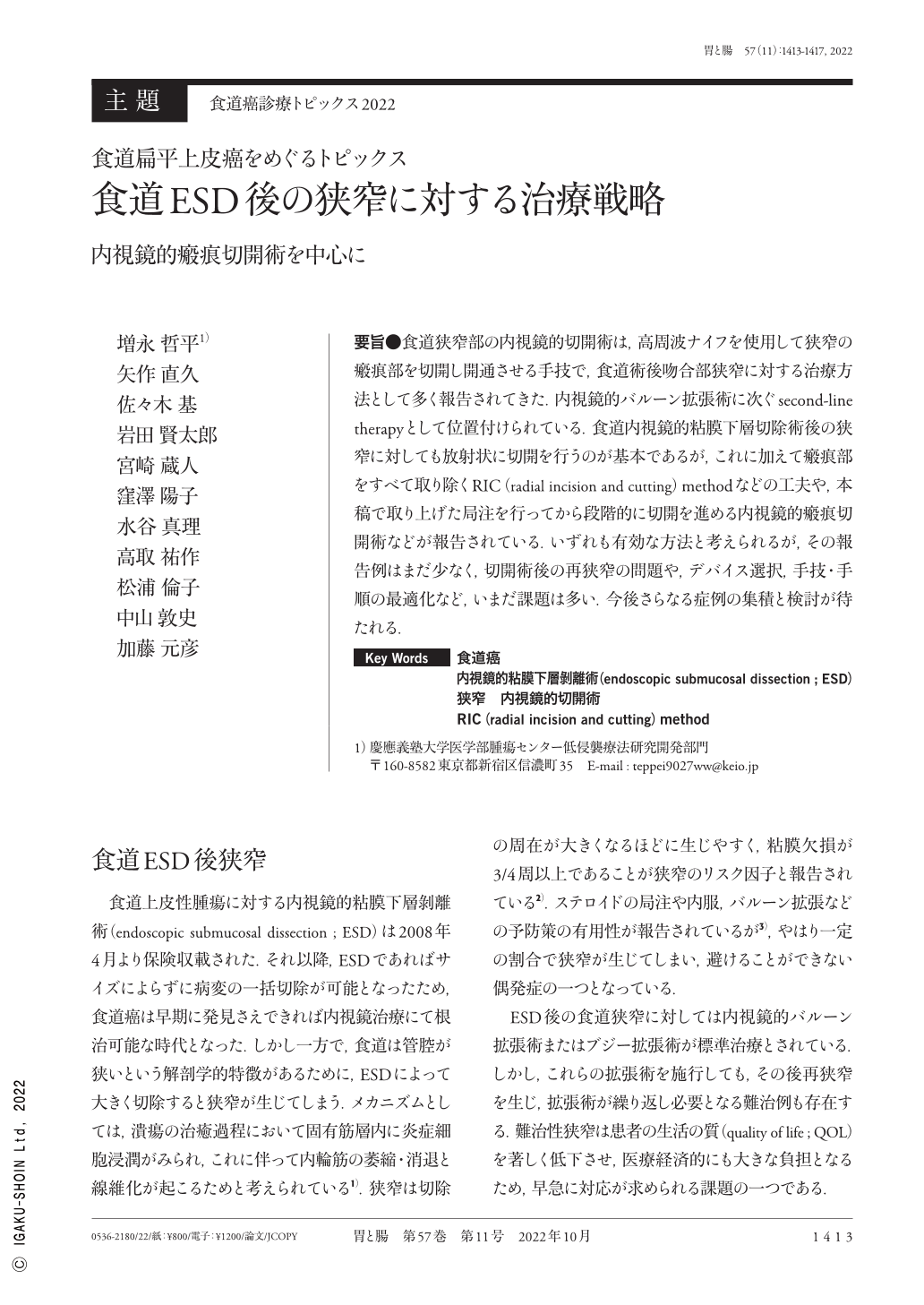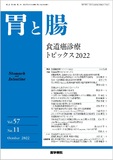Japanese
English
- 有料閲覧
- Abstract 文献概要
- 1ページ目 Look Inside
- 参考文献 Reference
要旨●食道狭窄部の内視鏡的切開術は,高周波ナイフを使用して狭窄の瘢痕部を切開し開通させる手技で,食道術後吻合部狭窄に対する治療方法として多く報告されてきた.内視鏡的バルーン拡張術に次ぐsecond-line therapyとして位置付けられている.食道内視鏡的粘膜下層切除術後の狭窄に対しても放射状に切開を行うのが基本であるが,これに加えて瘢痕部をすべて取り除くRIC(radial incision and cutting)methodなどの工夫や,本稿で取り上げた局注を行ってから段階的に切開を進める内視鏡的瘢痕切開術などが報告されている.いずれも有効な方法と考えられるが,その報告例はまだ少なく,切開術後の再狭窄の問題や,デバイス選択,手技・手順の最適化など,いまだ課題は多い.今後さらなる症例の集積と検討が待たれる.
Endoscopic incision therapy, which uses a high-frequency knife to cut through the scar of stenosis, has been widely reported as a treatment method for postoperative anastomotic stenosis of the esophagus. Following endoscopic balloon dilatation, it is considered second-line therapy. The radial incision is also the basic technique for stenosis after endoscopic submucosal dissection. In addition to this technique, there have been reports of innovations, such as the radial incision and cutting method, which removes the entire scar, and the endoscopic fibrotomy, in which the incision is made stepwise after local injection, which is discussed in this paper. Although they are considered effective, there have been few reports on them, and many issues remain to be addressed, such as the problem of restenosis after incision, device selection, and optimization of the procedure. In the future, more cases and investigations will be required.

Copyright © 2022, Igaku-Shoin Ltd. All rights reserved.


